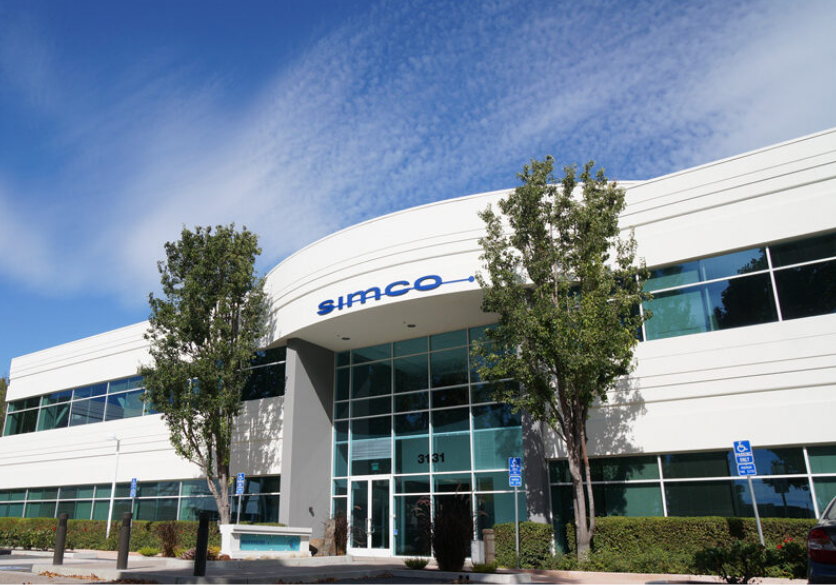In today’s fast-paced manufacturing and laboratory environments, equipment downtime represents more than just an operational inconvenience—it translates directly to lost productivity, delayed projects, and significant financial implications. As organizations face increasing pressure to optimize efficiency while maintaining rigorous quality standards, on-site calibration services have emerged as a strategic solution that addresses both technical requirements and business imperatives.
Understanding On-Site Calibration
On-site calibration refers to the practice of calibrating instruments and equipment at the customer’s facility, rather than sending them to an external calibration laboratory. Specialized technicians travel to the customer’s location with appropriate reference standards and equipment, performing calibrations where the instruments are installed and used.
This approach represents a fundamental shift from traditional calibration models, where instruments would be removed from service, carefully packaged, shipped to a calibration laboratory, calibrated, returned, and reinstalled—a process that could take days or weeks for each instrument. On-site calibration dramatically compresses this timeline while offering numerous other benefits for organizations with time-sensitive operations and critical equipment needs.
The Business Case for On-Site Calibration
The decision to utilize on-site calibration services typically centers around several key business drivers:
1. Minimized Equipment Downtime
Perhaps the most compelling advantage of on-site calibration is the dramatic reduction in equipment downtime. Consider a critical piece of testing equipment in a production environment:
Traditional Lab Calibration Process:
- Removal from service: 1 hour
- Packaging: 1 hour
- Shipping to lab: 1-3 days
- Queue time at lab: 1-5 days
- Calibration: 1-2 days
- Return shipping: 1-3 days
- Unpacking and reinstallation: 1-2 hours
- Total downtime: 4-14 days
On-Site Calibration Process:
- Scheduled technician visit: 0 days (pre-arranged)
- Calibration: 1-4 hours
- Documentation: 0.5-1 hour
- Total downtime: 0.5 day or less
This dramatic difference can translate to significant operational and financial benefits, particularly for equipment that represents a production bottleneck or is essential for quality control.
2. Elimination of Shipping Risks
Shipping sensitive measurement instruments always carries inherent risks:
- Physical damage during transit
- Environmental exposure (temperature, humidity, vibration)
- Potential for mishandling
- Shipping delays
- Loss of shipment
On-site calibration eliminates these risks entirely, ensuring that instruments remain in their operating environment and are handled only by qualified technicians.
3. Calibration in the Actual Operating Environment
When instruments are calibrated in the same environment where they’re used, the calibration better reflects their actual operating conditions. This contextual calibration can reveal issues that might not be apparent when the instrument is calibrated in a laboratory’s controlled environment, such as:
- Effects of local electromagnetic interference
- Impact of facility vibration
- Influence of actual ambient temperature and humidity conditions
- Issues with power supply quality
- Interaction with connected systems or equipment
These environmental factors can significantly influence instrument performance, making on-site calibration a more representative assessment of actual measurement accuracy in daily operations.
4. Immediate Verification and Troubleshooting
On-site calibration provides the opportunity for immediate verification that instruments are functioning correctly in their operational settings. If issues are discovered during calibration, technicians can:
- Consult with the equipment operators about usage patterns
- Observe actual application conditions
- Make adjustments based on specific operational needs
- Provide immediate training or recommendations to users
- Troubleshoot integration issues with other systems
This real-time interaction between calibration technicians and equipment users creates value beyond the calibration itself, often resulting in improved equipment utilization and performance.
5. Reduced Administrative Burden
On-site calibration simplifies the logistics of managing a calibration program:
- No need to generate shipping documents
- Elimination of tracking shipments
- Reduced risk of items being lost or misrouted
- Simplified scheduling and coordination
- Consolidated service for multiple instruments
- Direct handover of documentation
For organizations with large instrument inventories, these administrative efficiencies can represent significant time and cost savings for quality and metrology departments.
Industries and Applications Benefiting from On-Site Calibration
While on-site calibration offers advantages across various sectors, certain industries find particular value in this service model:
Pharmaceutical and Biotechnology
In pharmaceutical manufacturing and research, equipment downtime directly impacts production schedules and research timelines. Critical instruments such as:
- Analytical balances
- pH meters
- Dissolution apparatus
- HPLC systems
- Stability chambers
- Particle counters
- Temperature monitoring systems
All benefit from on-site calibration, particularly in GMP (Good Manufacturing Practice) environments where reinstallation would require additional qualification steps. On-site calibration minimizes disruption to validated processes while maintaining regulatory compliance.
Aerospace and Defense
The aerospace industry relies on precision measurements for both manufacturing and maintenance operations. On-site calibration supports:
- Production line testing equipment
- Aircraft maintenance tools
- Environmental testing chambers
- Non-destructive testing equipment
- Dimensional inspection tools
For aerospace manufacturers and maintenance facilities, equipment availability directly impacts production schedules and aircraft turnaround times, making on-site calibration particularly valuable.
Semiconductor Manufacturing
The semiconductor industry’s clean room environments present unique challenges for equipment calibration. Removing instruments from these controlled environments introduces contamination risks and disrupts production flows. On-site calibration of:
- Process control instruments
- Environmental monitoring systems
- Particle counters
- Gas flow meters
- Temperature and humidity sensors
Allows these critical parameters to be verified without compromising the controlled environment.
Medical Device Manufacturing
Medical device manufacturers operate under strict regulatory requirements while facing pressure to optimize production efficiency. On-site calibration supports compliance while minimizing disruptions to:
- Test equipment for product verification
- Environmental monitoring systems
- Production line measurement systems
- Quality control instruments
This approach helps manufacturers maintain both quality standards and production schedules.
Energy and Utilities
Power generation and distribution facilities often operate continuously, making equipment downtime exceptionally costly. On-site calibration supports:
- Monitoring and control systems
- Environmental compliance equipment
- Safety systems
- Electrical test equipment
These calibrations can often be scheduled during planned maintenance periods, further minimizing operational impact.
Types of Equipment Suitable for On-Site Calibration
While not all instruments can be effectively calibrated on-site due to reference standard requirements or environmental needs, many common equipment types are well-suited to this approach:
Dimensional Measurement Tools
- Calipers
- Micrometers
- Height gauges
- Dial indicators
- Torque wrenches
- Force gauges
- Hardness testers
Electrical Test Equipment
- Multimeters
- Oscilloscopes
- Power supplies
- Electrical safety analyzers
- Loop calibrators
- Process calibrators
- Clamp meters
Environmental Monitoring Equipment
- Temperature recorders
- Humidity sensors
- Pressure gauges
- Flow meters
- Air velocity meters
- Particle counters
- Gas detectors
Laboratory Instruments
- Balances and scales
- pH meters
- Conductivity meters
- Spectrophotometers
- Pipettes
- Thermometers
- Timers
Process Instrumentation
- Pressure transmitters
- Temperature transmitters
- Level sensors
- Control valves
- Analytical instruments
- Weighing systems
The feasibility of on-site calibration depends on factors including the required reference standards, environmental conditions, and the complexity of the calibration procedure. A qualified calibration provider can assess specific instruments and determine whether on-site service is appropriate.
Logistics and Implementation of On-Site Calibration Programs
Successfully implementing an on-site calibration program requires careful planning and coordination between the calibration provider and the customer organization:
1. Initial Assessment
The process typically begins with an assessment of:
- Instrument inventory and types
- Calibration requirements and standards
- Facility layout and access constraints
- Environmental conditions
- Scheduling requirements and production constraints
- Documentation and reporting needs
This information helps the calibration provider determine the feasibility of on-site service and develop an appropriate service plan.
2. Reference Standard Preparation
On-site calibration requires bringing appropriate reference standards to the customer location. These standards must:
- Be properly calibrated themselves with appropriate traceability
- Have sufficient accuracy for the instruments being calibrated (typically 4:1 ratio)
- Be transported in appropriate protective cases
- Be allowed to acclimate to the environment before use
- Be monitored for any changes during transport
Leading calibration providers maintain mobile reference standards specifically designed for on-site service, with appropriate environmental protection and monitoring during transport.
3. Scheduling and Coordination
Effective on-site calibration requires coordinated scheduling:
- Grouping similar instruments for efficient use of reference standards
- Aligning with production schedules to minimize disruption
- Ensuring appropriate facility access for technicians
- Coordinating with equipment operators or owners
- Planning for adequate workspace near the equipment
Many organizations establish regular on-site calibration schedules (monthly, quarterly, or annually) to streamline this coordination process.
4. On-Site Procedures
During the on-site visit, calibration technicians follow a structured process:
- Set up reference standards and allow for environmental stabilization
- Perform pre-calibration verification (as-found readings)
- Complete calibration adjustments as needed
- Perform post-calibration verification (as-left readings)
- Document all results, including measurement uncertainty
- Apply appropriate calibration labels
- Review results with designated customer representatives
This systematic approach ensures consistent quality regardless of location.
5. Documentation and Records Management
Comprehensive documentation is essential for any calibration program:
- Detailed calibration certificates
- Traceability information for reference standards
- Environmental conditions during calibration
- As-found and as-left data
- Uncertainty calculations
- Clear pass/fail indications based on acceptance criteria
- Recommendations for future action when appropriate
Modern calibration providers often offer electronic delivery of these documents, sometimes integrated directly with the customer’s calibration management system.
Overcoming Challenges in On-Site Calibration
While on-site calibration offers significant benefits, it also presents unique challenges that must be addressed:
1. Environmental Control
Laboratory calibrations occur in controlled environments with stable temperature, humidity, and minimal vibration or interference. On-site calibrations must contend with the actual facility conditions:
Solutions:
- Monitoring and documenting environmental parameters during calibration
- Using correction factors when appropriate
- Scheduling calibrations during periods of environmental stability
- Creating temporary controlled environments for sensitive calibrations
- Employing measurement techniques that minimize environmental influences
2. Reference Standard Limitations
The accuracy and range of reference standards that can be transported to customer sites may be limited compared to laboratory capabilities:
Solutions:
- Careful selection of portable reference standards with appropriate accuracy
- Modular calibration systems that can be configured for different applications
- Strategic scheduling to minimize the number of standards required in a single visit
- Hybrid programs where some instruments are calibrated on-site and others in the laboratory
3. Technical Expertise Requirements
On-site calibration technicians must have broader knowledge and problem-solving abilities than laboratory technicians:
Solutions:
- Comprehensive training programs for field technicians
- Remote support from laboratory specialists when needed
- Detailed procedures for common equipment types
- Team approaches for complex calibrations
- Regular technical development and cross-training
4. Logistics and Transport
Transporting sensitive calibration standards requires special considerations:
Solutions:
- Purpose-designed transport cases with appropriate shock and environmental protection
- Verification of standard performance before and after transport
- Allowing adequate acclimation time at the customer site
- Maintaining environmental monitoring during transport when necessary
- Regional technicians to minimize transport distances
5. Workspace and Access Limitations
Customer facilities may not provide ideal workspaces for calibration activities:
Solutions:
- Pre-visit site surveys to identify potential issues
- Portable workbenches and lighting
- Battery-operated equipment to overcome power limitations
- Scheduling during facility downtime for better access
- Clear communication about space and access requirements
Selecting an On-Site Calibration Provider
Organizations seeking on-site calibration services should evaluate potential providers based on several key criteria:
1. Accreditation and Quality System
Verify that the provider maintains appropriate accreditations for field calibration services:
- ISO 17025 accreditation with a scope that covers on-site calibration
- Quality management system that addresses the unique challenges of field work
- Documented procedures specific to on-site calibration
- Regular assessment by accreditation bodies
2. Technical Capabilities
Assess whether the provider can support your specific instrument types:
- Range of calibration disciplines (electrical, dimensional, temperature, etc.)
- Accuracy capabilities for each discipline
- Appropriate reference standards for your equipment
- Experience with your specific instrument models
3. Geographic Coverage
Consider the provider’s ability to service all your locations:
- Number and location of field technicians
- Response time commitments
- Travel charges and policies
- Ability to support international locations if needed
4. Scheduling Flexibility
Evaluate how well the provider can accommodate your operational needs:
- Advance scheduling options
- Emergency calibration capability
- Ability to work outside normal business hours
- Weekend and holiday availability when required
5. Documentation and Reporting
Review the provider’s approach to calibration documentation:
- Comprehensiveness of calibration certificates
- Electronic delivery options
- Integration with calibration management software
- Customization capabilities for your specific requirements
6. Additional Services
Consider whether the provider offers valuable complementary services:
- Equipment repair capabilities
- Preventive maintenance
- Calibration management software
- Measurement uncertainty analysis
- User training
Leading calibration service providers like SIMCO Electronics offer comprehensive on-site calibration programs with ISO 17025-accredited technicians available nationwide, providing the technical expertise, geographic coverage, and quality assurance required by regulated industries.
Related Post:
- 210-200-8992 – You Need to Know to Stay Safe!
- 8009556600 – How to Stop Harassing Debt Collection Calls!
- Pedrovazpaulo Consulting – Strategy & Innovation for Growth!
- Gärningen – Meaning, Origins, and Cultural Significance!
- Kennedy Funding Ripoff Report – Uncovering the Facts and Complaints!
- Olimpus Scan – Powerhouse Behind Unofficial Manga Translations!
- Antonio Chi Su – Visionary of Cultural Fusion!
- Anthony Skaria – America’s Youngest Real Estate Powerhouse!
- Wepbound – Features, Benefits, and the Future of Work!


